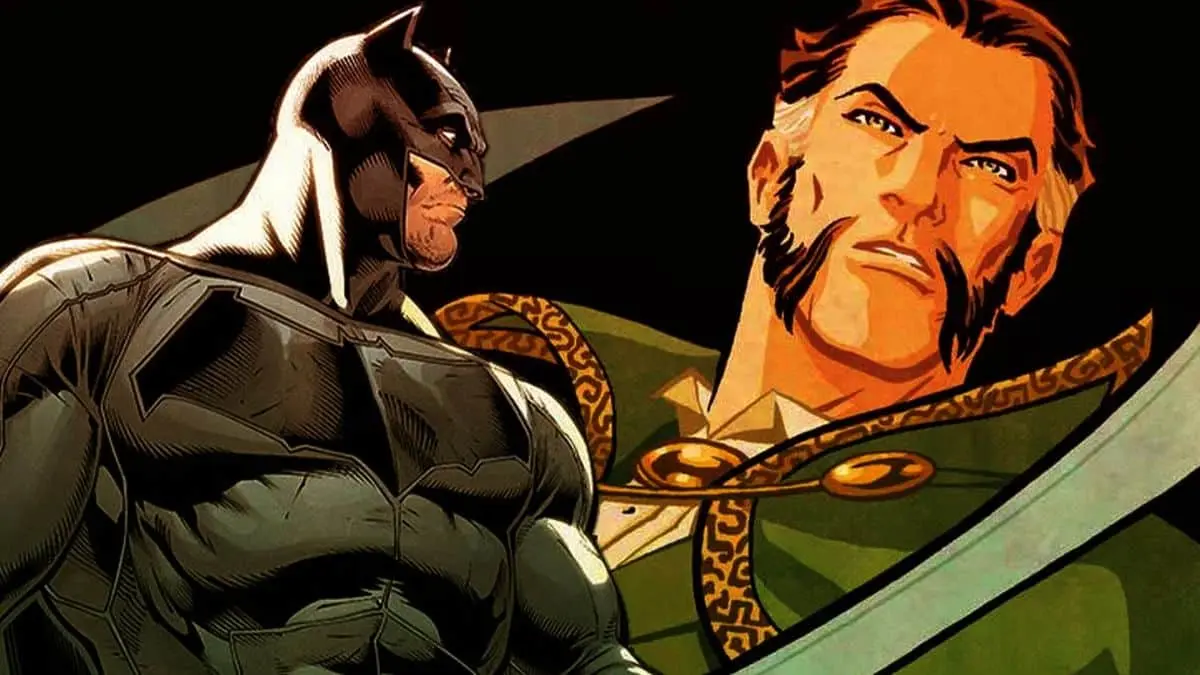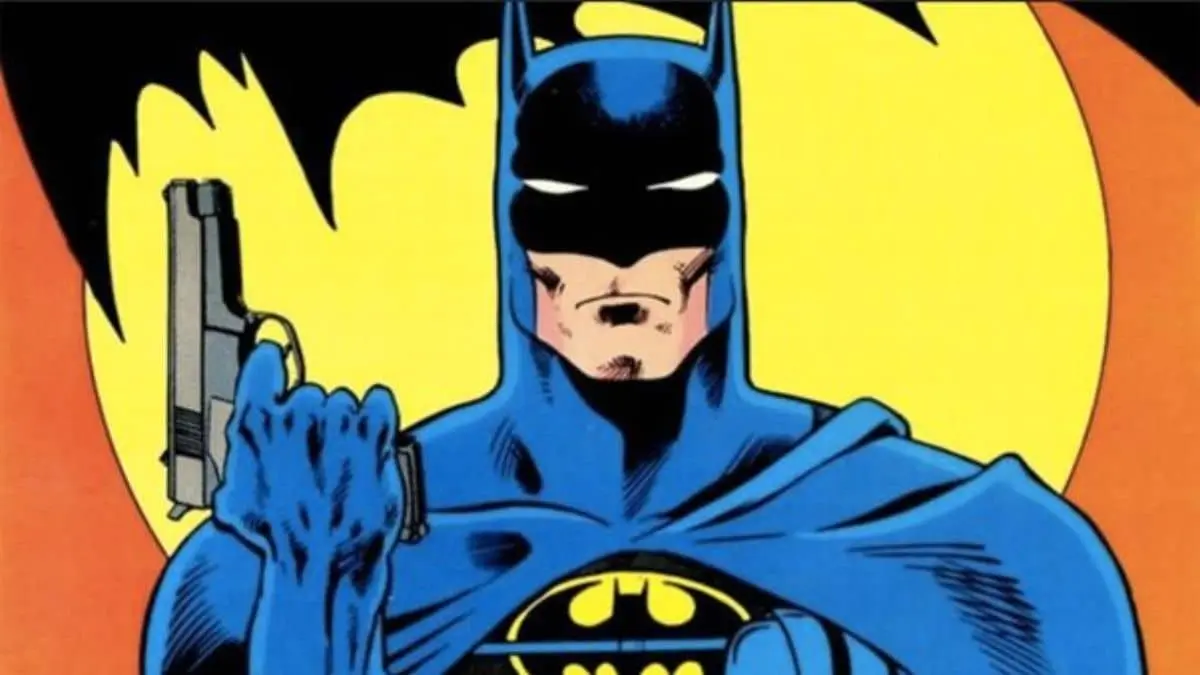In the world of comic books, Batman is known for his unwavering commitment to justice and his strict moral code. However, even the Dark Knight has moments of moral ambiguity where he strays from his own principles. From using guns to resorting to extreme violence, here are 10 instances where Batman went against his own rules, showcasing the complexities of his character and the difficult decisions he faces in his quest to protect Gotham City.
10 Times Batman Went Against His Own Rules
Darkseid’s Death: Batman’s Deadly Shot

In the tumultuous events of Final Crisis, Batman faced a dire ultimatum: to uphold his staunch moral code or to ensure the salvation of humanity. Faced with Darkseid’s imminent threat of world domination, Batman made a controversial decision.
He delivered a fatal blow to Darkseid by firing a Radion bullet, a weapon that would poison the tyrant. Despite the gravity of his actions, Batman’s resolve wavered as he succumbed to Darkseid’s Omega Beams. This pivotal moment forced Batman to confront the harsh reality of sacrificing his principles for the greater good, leaving an indelible mark on his legacy.
Flashpoint Fracture: Batman’s Fatal Strike

Amidst the chaos of the Flashpoint event, Batman found himself navigating a distorted reality where his own son, Bruce Wayne, had perished, and his father, Thomas Wayne, donned the cape and cowl. As Barry Allen sought to rectify the fractured timeline, Batman confronted the ruthless Reverse-Flash.
In a decisive moment, Thomas Wayne, driven by desperation, took drastic action, delivering a fatal blow to his son’s nemesis. Despite the profound repercussions of his actions, Thomas’s sacrifice played a pivotal role in restoring balance to the universe. Yet, his subsequent return would unveil a darker side to Flashpoint Batman’s methods, challenging the very essence of heroism.
Joker’s Death: Batman’s Unintended Consequence

In the gripping one-shot, “Dark Nights: The Batman Who Laughs,” Batman makes a harrowing decision that shatters his longstanding moral code. Faced with the relentless chaos orchestrated by the Joker, Batman delivers a fatal blow, ending the Clown Prince of Crime’s reign of terror once and for all.
However, this act of desperation unleashes unforeseen consequences as Batman becomes infected with a potent strain of Joker Venom. Transformed into a dark and twisted version of himself, the Batman Who Laughs emerges, posing a dire threat to reality itself. Thus, Batman’s deviation from his principles sparks a cataclysmic chain of events that reverberates throughout the multiverse.
Vampiric Vendetta: Batman’s Bloody Deed

In the chilling graphic novel “Batman: Bloodstorm,” the Caped Crusader’s nocturnal nature takes on a terrifying twist. Transforming into a vampire, Batman prowls the shadows of Gotham, grappling with his newfound thirst for blood. Despite his efforts to resist succumbing to his primal urges, tragedy strikes when the Joker murders Catwoman.
Consumed by grief and rage, Batman unleashes his darkest impulses, feeding on the Joker’s blood in a fateful act of vengeance. However, this pivotal moment seals Batman’s descent into darkness, condemning him to embrace his vampiric nature fully. Thus, the lines between hero and monster blur in this haunting tale of vengeance and damnation.
Thug Incineration: Batman’s Harsh Justice

In the controversial comic “All-Star Batman And Robin,” penned by Frank Miller and illustrated by Jim Lee, Batman’s vigilante tactics take a dark turn. Departing from his usual code of conduct, this rendition of the Dark Knight exhibits a disregard for ethical boundaries. Shocking readers, Batman resorts to extreme measures by setting thugs ablaze, showcasing a ruthless and brutal side previously unseen in mainstream Batman lore.
Additionally, his uncharacteristically intimate encounter with Black Canary amid the chaos further underscores the unconventional nature of this interpretation. While the series may offer a guilty pleasure for some, it challenges traditional perceptions of Batman’s moral compass with its provocative and divergent narrative choices.
Batman’s Personal Turmoil Leads to Brutality

In “Batman: Cold Days” by Tom King, Bruce Wayne grapples with personal turmoil after being jilted by Catwoman. Amidst this emotional turmoil, Batman’s usual restraint slips, leading to a brutal confrontation with Mr. Freeze. While Batman typically maintains control over his actions, his unresolved emotions cloud his judgment, resulting in regrettable violence.
This deviation from his moral code serves as a stark reminder of the toll personal struggles can take on even the most disciplined hero. Ultimately, Batman’s lapse in restraint highlights the delicate balance between his responsibilities as a vigilante and his personal demons.
Omega Ascendance: Batman’s Moral Fall

In the gripping saga of “Batman: The Last Knight On Earth” penned by Scott Snyder and illustrated by Greg Capullo, readers are thrust into a dystopian future where Batman faces a formidable adversary: Omega. Unveiling a shocking revelation, Omega emerges not as an external foe, but as a corrupted version of Batman himself—a stark betrayal of his core principles.
Succumbing to darkness, Omega embodies the antithesis of everything Batman stands for, pushing the Caped Crusader to confront his own shadow. As the fate of the world hangs in the balance, Batman grapples with the harrowing realization that his greatest enemy may be a twisted reflection of his own identity.
Ra’s Al Ghul’s Repeated End: Batman’s Deadly Confrontations

In the timeless struggle between Batman and Ra’s al Ghul, the Dark Knight has been compelled to make difficult decisions that challenge his moral code. Despite Ra’s al Ghul’s unwavering respect for Batman, their confrontations often escalate to lethal proportions, with Batman forced to take decisive action.
However, the knowledge that Ra’s al Ghul possesses the means of resurrection through the Lazarus Pits tempers Batman’s actions, rendering them temporary measures in their ongoing conflict. With each encounter, Batman grapples with the complexities of justice and mortality, navigating a delicate balance between upholding his principles and confronting the enduring threat posed by the Demon’s Head.
Gotham’s Reign: Batman’s Authoritarian Turn

In the visionary tale of “Kingdom Come” by Mark Waid and Alex Ross, Batman’s unwavering dedication to justice takes a controversial turn as he transforms Gotham into a fortress of fear. Despite his noble intentions, Batman’s methods inadvertently plunge the city into a state of terror, causing even its residents to cower in apprehension.
However, with the timely intervention of Superman, Batman recognizes the consequences of his actions and endeavors to rectify his misguided approach. Through introspection and redemption, Batman reverts to his altruistic roots, devising a plan that ultimately restores hope and order to Gotham, reaffirming his commitment to protecting the innocent.
Crisis Weapon: Batman’s Last Resort

In the climactic events of “Final Crisis” penned by Grant Morrison, Batman confronts the cosmic threat of Darkseid with uncharacteristic desperation. Armed with a Radion bullet capable of harming the deity, Batman defies his longstanding prohibition against firearms to wound the formidable villain.
Despite the gravity of the situation, Batman’s deviation from his moral code underscores the severity of the crisis at hand. However, his decision carries dire consequences as Darkseid retaliates with the devastating Omega Sanction, exacting a heavy toll on the Dark Knight. This pivotal moment serves as a testament to Batman’s unwavering resolve and the harrowing choices he faces in the face of existential threats.
Also Read: Animals with Mind-Blowing Superpowers in Marvel Comics



